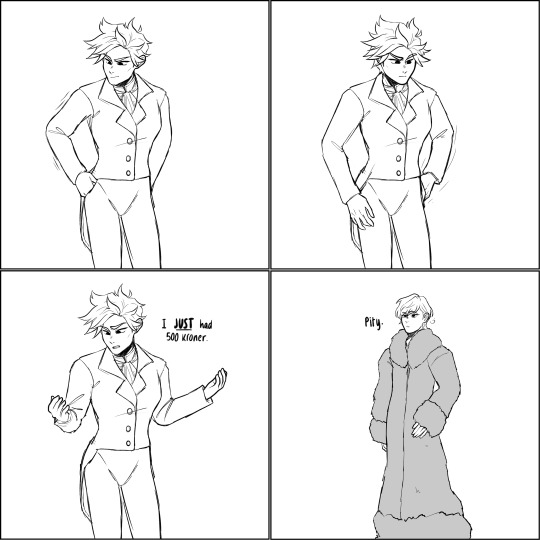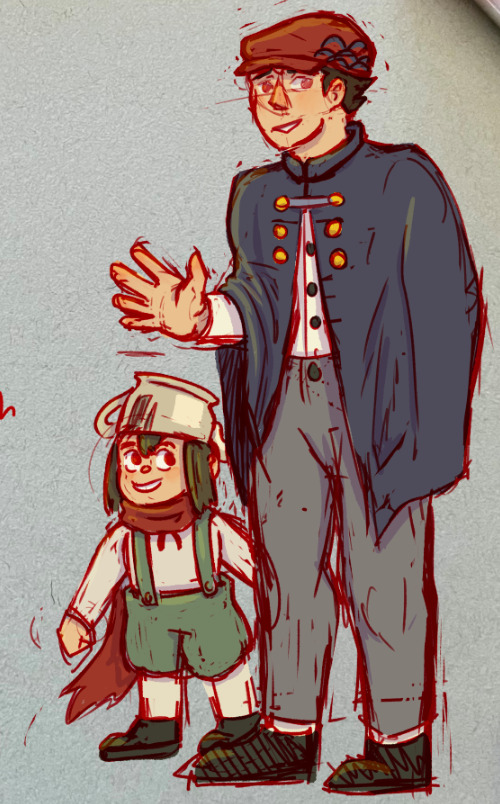#Icelandic lit
Text
Coral, spread fingers, birch twigs, a loosely knotted fishing net, crystals, river deltas, ivy, mackerel clouds, women’s hair…diverse as these phenomena are and formed from opposing elements, nevertheless they all revolve around the invisible joints, their opposite forms touch even though they are far apart…and if I imitate their form, reaching my arms to the sky—moving them together and apart in turn, waving them to and fro—then [I am] no longer alone…I am the brother of all that divides, all that curls, all that intertwines, all that waves…
Sjón, From the Mouth of the Whale (trans. Victoria Cribb)
#q#lit#quotes#literature#sjon#from the mouth of the whale#life everlasting#reading#icelandic lit#m#x
318 notes
·
View notes
Text

Herostories by Kristín Svava Tómasdóttir, translated from the Icelandic by K.B. Thors, is a novel-in-verse of found poetry, drawn from a history of midwives in Iceland, traversing frigid, brutal climates to help people deliver their babies, both lauded and isolated, both integral to society and outside of it, transgressing the boundaries of gender. It's interesting, and has the Icelandic beside the English as well as an interview and note from the author and translator that is really interesting and enlightening.
#herostories#kristín svava tómasdóttir#icelandic lit#bookworm#wit month#women in translation#my book reviews
41 notes
·
View notes
Text







Inside an iceberg carved off the end of a subglacial volcano. Southern Iceland.
Photographed by Freddie Ardley
#photographers on tumblr#landscape#photography#artists on tumblr#travel#nature#art#photographer#beauty#view#Iceland#ice#glacier#snow#iceberg#Freddie Ardley#winter#spring#story#lit
922 notes
·
View notes
Text

the prompt was "den finally gets little a money and nor pickpockets him Immediately"
#hetalia#aph#historical hetalia#aph norway#aph denmark#dennor#hws denmark#demark aph#norway aph#hws norway#Denmark tries to sell Iceland to Prussia ONE TIME and Norway (not amused) is like 'it's free real estate' and just pickpockets him#my best friend @blabaerlakris came up with this for the record she deserves all the credit I just did the doodlin' lmao#also this is strictly for the lulz and not a reflection on Norway in any way I lit rally live in Norway 😭😭
268 notes
·
View notes
Text

She's such a good sport helping me learn studio photography
#the right side of her face needs to be lit more#but my speedlight isn't strong enough compared to the strobe#nefja#icelandic sheepdog#dogblr#7 years#studio photography
82 notes
·
View notes
Text
Someone in my class has a Tennessee Walking Horse and we both geeked out over each other's gaited horses hahaaa
#she was like 'my horse's breed has a leg thing too'#and me hearing similar things slowly asks 'what breed is your horse?'#'TWH'#'OH MY GOD THAT IS SO COOL' and her face just lit up#like yes hello I love gaited horses in general and yours is incredible as well oh my gooossshhhhh I'd love to ride a TWH one day!#and she's like 'I'd like that with an Icelandic too!'#and the third person was a little bit forgotten (sorry didn't mean to do that)
7 notes
·
View notes
Text
This seems like a good time to remind the world of Makt Myrkanna, or Powers of Darkness, the insane Icelandic Dracula fanfic by Valdimar Ásmundsson that managed to pass itself off as just a regular translation for OVER 100 YEARS and no one noticed.
Anyway, it’s a great read, check it out
#was it valdimar or was it bram#who really wrote this book#the mystery lives on#maybe it was really Dracula#secret Dracula#the Dracula bram didn’t want you to see#dracula daily#dracula#powers of darkness#iceland#literature#translation#fanfics#Makt#bram stoker#bram stocker's dracula#valdimar ásmundsson#The great literature debates#lit
27 notes
·
View notes
Text
She came, at last, to the cave. She rested just inside it, then took from out of her dress a fish head and laid it at the entrance to the cave.
"Let us live," she begged. "Let Helgi have luck with the fishing.”
—W.D. Valgardson, What The Bear Said: Skald Tales of New Iceland, “Sigga’s Prayer”
5 notes
·
View notes
Text
going to goodreads after finishing a well-recieved book that I personally disliked and absolutely vaccuming up the one star reviews.
#found this one person who also pointed out the abelism and super weird misunderstanding of psycology in this one book i just finished#kissing them on the mouth#also like. im so close to just fucking giving up on icelandic lit#my only five star icelandic book?#fucking Sjálfstætt Fólk#like. cmon
1 note
·
View note
Note
Hi I hope this isn't presumptuous, but so, that post you made about Tolkien making the lads leave their weapons outside the hall and CS Lewis thinking the hall was gonna get burned down by a lady who also wanted to kill herself... what's the historical precedent for that? Is there a trope in medieval lit where people like... do that? I ask because uh. I am obsessed with Children of Hurin and there's a scene where that like, happens. And I'm obsessed with that scene, and would love to know if there's like, cultural/mythic context that would enrich my knowledge!
OH BOY, sorry I'm getting to this late, it's been uhhh a summer, but one, this is a very good question!! And two, yes there is absolutely precedent, particularly in early medieval literature, and high medieval literature set in the early medieval (circa 500-1100 AD) past. I'll let someone else debate how often people actually historically locked their enemies into a hall and burned them, but especially in Old Norse literature (and if Fellowship felt like it leaned a little more on Old English literature, Two Towers, where Eowyn appears, felt a little more Old Norse) this is common. Off the top of my head, you've got many Icelandic family feuds ending in burning the whole family in their hall, like Njal's Saga (Old Norse), Attila the Hun dramas (yeah he's a big guy in the burning halls circuit, but actually not in the way you might expect) like his cameos in Volsung Saga (Old Norse) and Nibelungelied (Middle High German), and my vague recollection of a few Irish and Welsh versions that no search engine is giving up for me right now.
This, predictably, got long and slightly off topic.
Disclaimer: As usual, I should say I come from an Old English-centric background, and Old English literature is actually notable among all its neighbors for not burning down too many halls. Second disclaimer, all links are not proper citations, they just go to wiki.
Hall-burning in literature is, to my understanding, part of the concerns of a few early medieval cultures in which revenge is not only expected but in many cases legally reinforced and codified, and one in which conflicts could spiral to engulf -- figuratively, or literally and in flames -- entire families. Many medieval Icelandic sagas are focused on this exact type of destruction of whole families or friendship/community units. Most relevant of these to Eowyn, Two Towers, and the vibes of Edoras (since alas I am only partway into RotK and can't speak to Children of Hurin yet!) is Volsung Saga, which is set on the Continent, not Iceland, and actually has to do with Attila the Hun. As mentioned before, an incredible amount of stuff turns out to have to do with Attila. We will come back to him!
So, on the particular post you're talking about, a few people iirc have replied pointing out that the hall in TT is clearly supposed to be based on a hall from Old English literature, namely the hall in Beowulf, which famously did not actually get burnt down. And that's all true! I was not posting with much nuance; I was mostly having a joke at the expense of CS Lewis. However, I was also referencing a very very common trope in Old Norse/early medieval stories, and I personally think JRR was as well (AND I think Beowulf was also very consciously referencing the exact same motif anyway) (no one has to agree with me, a tumblr blog, on any of these points).
The thing about the hall when our heroes approach is that the scariest damn thing in that hall is Eowyn. Certainly not every hall-burning story requires a woman with no other recourse to set the fire (in fact, the "warrior band approaches unknown hall which might have a grudge against them" is a trope that can get you killed in a pretty homosocial environment, as I guess Aragorn at least was aware, being a big reader). Still, the presence of a woman who is swiftly running out of options does fit what I'd consider one of the or perhaps The best known version of the early medieval burning hall trope: Gudrun, who shows up in at least a dozen different texts in both the Scandinavian and the German language traditions, including Volsung Saga, a text which itself often gets paraded around as the basis of lotr (which I'm sure it is, in that JRR appears to have simply and very fairly based lotr on every piece of early medieval vernacular literature I can think of).
In a portion of Gudrun's story (which of course changes a bit in each retelling), after her first marriage she is unhappily married to Atli, who is none other than our main man Attila the Hun. After Attila kills her brothers for reasons (in one version, her father), seeing no other way to take the necessary revenge and no other way out, she kills the two sons she had by him, serves them to Attila for dinner, has Attila killed, and then sets fire to the hall with everyone in it. After this, she attempts to drown herself.
The self-destruction of this act is a really important beat, and has only gotten more-so as a comparison to Eowyn the further I've read into RotK (currently, I'm at the houses of healing after merry and eowyn take on the witch king). It's a lot clearer in the book than the films, for me, that Eowyn going off to battle was not so a straightforward empowering and/or freeing move, despite allowing her some agency, but more the one path she saw as available to her with which to die with honor (which was pretty much exactly what Gudrun was facing as well). Like Gudrun, whose first husband was a great hero but has died, Eowyn's romantic choice is a hero who is presumed dead (sorry Aragorn they did Not believe in your ghost skills). In fact, in some versions Gudrun does put on armor and fight with her brothers before they're killed. She kills Attila with her own hand, with the help of another man who needs to avenge a blood feud against Attila.
So while Eowyn didn't get forced into marriage to Attila Wormtongue (with apologies to both historical Attila and that one historical skald also called Wormtongue who was reportedly hot) and burn the whole place down, she's still trapped, and like Gudrun chooses destruction alongside her household.
Reading her arc feels so much like watching Tolkien write a fix-it for Gudrun. What if she got this one little chance, and this one other little chance, and this one more -- tiny little shifts in the narrative that allow her to get out, and not through fire, and not through death.
Anyway, this got away from me. I hope it added some context to the Children of Hurin arson case! Thanks for the ask
#ask replies#astro lotr#how long is this ah man#cw for some discussion of suicide in fiction? blanket cw for norse sagas tbh
203 notes
·
View notes
Photo

2024 February 25
A Phoenix Aurora over Iceland
Image Credit & Copyright: Hallgrimur P. Helgason; Rollover Annotation: Judy Schmidt
Explanation: All of the other aurora watchers had gone home. By 3:30 am in Iceland, on a quiet September night, much of that night's auroras had died down. Suddenly, unexpectedly, a new burst of particles streamed down from space, lighting up the Earth's atmosphere once again. This time, surprisingly, pareidoliacally, the night lit up with an amazing shape reminiscent of a giant phoenix. With camera equipment at the ready, two quick sky images were taken, followed immediately by a third of the land. The mountain in the background is Helgafell, while the small foreground river is called Kaldá, both located about 30 kilometers north of Iceland's capital Reykjavík. Seasoned skywatchers will note that just above the mountain, toward the left, is the constellation of Orion, while the Pleiades star cluster is also visible just above the frame center. The 2016 aurora, which lasted only a minute and was soon gone forever -- would possibly be dismissed as a fanciful fable -- were it not captured in the featured, digitally-composed, image mosaic.
∞ Source: apod.nasa.gov/apod/ap240225.html
172 notes
·
View notes
Text
“[Snorri Sturluson] says in his Skálda, or Handbook of Poetry:
‘It is a metaphor to call the sword a serpent and name it rightly, so that the sheath is its path and the baldrics and fittings its skin. That is to stay true to the nature of the serpent, for it slides out of its skin and also to water [...] A metaphor is thought to be well conceived if the notion that has been adopted is maintained throughout the verse. But if a sword is called a serpent, and later a fish or a wand, or changed another way, people call it monstrous and regard it as spoiling the verse.’
Balderdash, I say, let the sword turn into an adder and the adder a salmon and the salmon a birch twig and the birch twig a sword and the sword a tongue…Let it all run together so swiftly that it cannot be separated again.
Sjón, From the Mouth of the Whale (trans. Victoria Cribb)
#q#lit#quotes#literature#sjon#from the mouth of the whale#on poetry#favourite#icelandic lit#m#x#reading
180 notes
·
View notes
Text
Pinned Post, or, What Is This Blog Exactly?
Given the recent influx of new followers, I figure I had better make us a pinned post so people know who we are and what we're doing. Because, as much as I enjoy just posting whatever, this is a podcast account and people should know that. Especially if they like weird medieval stuff, as that is our whole deal.
The Maniculum, available wherever you normally get your podcasts, is a show where we read medieval literature, make jokes about it, and then suggest ways to adapt it into TTRPG material (or other forms of storytelling). We try to pick especially strange medieval texts, most of which you would be unlikely to come across in your typical medieval-lit survey course, though we have done a few well-known ones (most notably our series on Egil’s Saga).
It’s hosted by Zoe and Mac. (This is Mac typing now; I do most of the Tumblr posting. Zoe sometimes posts as @meanderingmedievalist.) Both of us are medievalists with like degrees and stuff, so we at least kind of know what we’re talking about when we discuss medieval literature. Mac is in grad school, most of the way through a PhD. Zoe finished her MA a few years ago and got a job working on video games – she did narrative design on Pentiment, if you’re familiar with it.
The general structure of the podcast is that one of us (we take turns) chooses a text and reads / paraphrases / summarizes it for the other, who responds to it with comments & questions & jokes & digressive tangents. Then we close with a series of segments where we pull interesting features, ideas, etc. from the text for potential use in your TTRPG / storytelling projects.
If you want to check out the show but don’t want to start at the beginning where you have to listen to us figure out what we’re doing (the audio on the first handful of episodes is a bit rough, for instance), here are some suggestions:
Our 2022 Halloween special (link here), where we read a selection of medieval stories about undead creatures.
An episode (link here) about the dragon Fafnir and the famous slaying thereof.
The Story of King Constant (link here), a fairly short and obscure tale from medieval France. (The episode is still a normal length; the story is short enough that the full text fits comfortably into a single episode with no summarizing needed.) I include this one because I feel it’s a good self-contained representation of what we do.
The first episode (link here) of our two-parter on the Peasants’ Revolt, released to commemorate May Day 2023.
Lanval (link here), one of the most widely known stories by Marie de France. This is also good as a self-contained episode, and it's a story that may be familiar to you already.
And if you want to jump into a series:
The first episode (link here) of our seven-part series on the highly-regarded Icelandic text Egil’s Saga, about a Viking warrior-poet who is also kind of a dick.
The first episode (link here) of our ten-part series on Perlesvaus – our longest series on a single text so far, wherein we work through what might be the weirdest Arthurian romance out there.
If this just popped up on your dash, sorry for the long self-promotional post. Hope you come check us out. New episodes every other week.
154 notes
·
View notes
Text

Katla Ice Cave I - Iceland
Photographed by Freddie Ardley
freddieardley.com/prints
#photographers on tumblr#landscape#photography#artists on tumblr#photographer#travel#nature#art#beauty#iceland#glacier#ice#adventure#cave#volcano#hiking#story#lit
396 notes
·
View notes
Text
some random (mostly modern) headcanons about the ghosts:
julian is mildly allergic to dogs
robin is an astrophysicist with a background interesting in linguistics. due to adhd he tends to start learning languages on a whim. his current project is icelandic
julian and margot divorced because they both discovered the other person cheating on them at the same time
much like julian, thomas cannot be in the same room as a dog for long. it's not allergies, though, dogs just hate him. or they love biting off his nose. it's not clear
humphrey's father died in a car crash when he was a teenager, leading him to inherit a lot of wealth at a young age. whenever anyone tries to offer their condolences, he casually tells them that he hated his father (the feeling was mutual)
thomas is a lit student doing his degree on nineteenth century romantics. nobody knows why he has beef with a poet who's been dead for more than two hundred years, and at this point they're too afraid to ask
fanny is outraged when she discovers her husband has been evading taxes behind her back because she knows she could've managed the numbers better (and he didn't think to tell her!)
she's also very good with photoshop. julian is terrified that a) someday she'll use photoshop against him or b) she'll use her connections to get in him in trouble. or c) she'll yell at him, which is even worse
kitty really likes fizzy sweets
and pink dresses
and gore
she wants to become a surgeon one day
the captain's wardrobe is just the same turtlenecks in a few different colours (read: grey, green, and black)
nobody actually knows shit about the captain or robin's pasts, they both just sort of turned up one day
humphrey once lived in france and spain for a few years. he picked up spanish, but not french, because he can learn any language just fine... except french, for some reason
alison keeps on trying to drag her mates into her insane schemes to win the war against her neighbour
They Do Not Work
everyone is slightly terrified of her. except julian, who's decided to mentor her
yikes
134 notes
·
View notes
Note
Tell me more about over the garden wall au?
Hello! I would be more than happy to tell you more!
What I have right now is very barebones since I have not had time to really sit and think about it because of school. There will be more in the future, and things may change!
I'm going to put a read more because this is more than I thought it would be. There will be doodles and sketches down there as well!
So far: I have Ingo in the place of the Woodsman, constantly searching for Elden Wood to grind into oil to fill his lantern, the lantern that holds his brother's soul; however, unlike the show, it is technically Emmet's soul, but I will explain that more when I get to his part. Having been at this for a while, Ingo is slowly but surely losing energy, and his partner, Chandelure, is doing all she can to keep him alive, as she cannot materialize herself in the Unkown. So Ingo looks a little worse for wear, and Chandelure's features show through on Ingo more and more as time passes, to where eventually half of his body cannot materialize correctly and shows as smoke.
Emmet, on the flip side, is the Beast in this story, having been corrupted by some entity and now feeding on lost souls. He still keeps his tattered coat, but most of his body doesn't materialize anymore and becomes black smoke. The deer skull was more for flavor and to match a little more with the beast design, but I'll think of the meaning later. As far as the lantern goes, it differs from the show in the sense that it is carrying who Ingo believes it is, his brother; however, it carries Emmet's uncorrupted soul, and the entity does not want that getting released, so it chooses to gaslight Emmet, and then Ingo through Emmet, to keep the lantern lit and locked up so the entity remains in control.
As for Akari and Rei, I am replacing Wirt and Greg with Rei being Wirt and Akari being Greg, mostly because I think it's funny. However, their stories do not significantly differ between the show and the story. They fell into one of the frozen lakes in the Alabaster Icelands when attending a Pearl Clan festival, and the story continues in the same way as the show. Greg's frog is replaced with a Crogunk, much like how Beatrice is a Starly.

For Character Replacements/ Me decided who I'm putting where (thank you @gender-nuteral-nut-boy for your help)
Beatrice - Melli
Endicott - Adaman
Margueritte - Irida
Jimmy Brown - Iscan
Ms. Langtree - Palina
Mr. Langtree - Calaba
Auntie Whispers - Gaeric
Lorna - Sabi
Sara - Hilda
Jason Funderburker - Hilbert
Adelaida - Beni
That's pretty much all I have for now. I am really enjoying the process of creating again, but it is taking me a lot longer than I thought it would.
#cardinals art#submas#submas au#subway boss ingo#subway boss emmet#otgw au#pla akari#pla rei#otgw spoilers#over the garden wall
23 notes
·
View notes